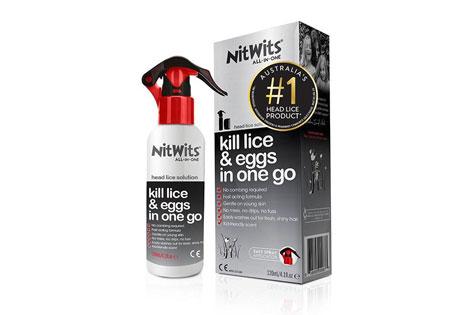Did you know it’s a complete myth that head lice are notoriously difficult to eradicate from your home? There’s actually an easy process to follow, with many families successfully reducing the risk of infestation time and time again. Effectively getting rid of head lice from the hair is only part of the solution and understanding how it is spread and where else they may live is a step towards annihilating this unwelcome critter.
These miniscule blood-suckers have a terrible reputation and can often make people feel gross but nits carry no diseases and have no bearing on your personal hygiene.
There is a myth that they only like dirty hair but the truth is, they are not fussy. If you have hair, be it clean, dirty, coloured and gelled, you are at risk.
More than 95 per cent of head lice infestations are picked up at school through hair-to-hair contact with someone who already has lice. While everyone loves to cuddle, wrestle, and get in close for a ‘selfie’, these are considered high-risk activities in the world of nits. This is why if one person in your family is infested with nits, the entire family must be checked and potentially treated or you may be at risk of re-infestation.
Once you have detected head lice in your home you must be fastidious in treating them. Head lice can only survive on the scalp, close to their favourite food source – your blood. The female louse can lay between 50 and 100 eggs (nits) in her 35-day life span. That’s a lot of babies in a very short time, all living in your child’s (or your) hair.
If you miss some eggs in your treatment, and they hatch, you may have to go through the entire process again.
Nadine Ismiel-Nash, the mum and scientist who created Australia’s #1 Head Lice treatment NitWits All-In-One, is urging Australian parents to remember that early detection and treatment of head lice will minimise the spread.
“For any child in school, including preschool and high school, weekly head lice checks are a MUST. Don’t forget to do a good check behind the ears and at the base of the neck. Preventing head lice is easier and more pleasant for kids and parents, and a good routine will make it much less likely that your child will be affected.
“Secure long hair in a bun or a plait to minimise ’hair-to-hair’ contact. Apply a repellent like the NitWits Anti-Lice & Detangling Spray to deter and defend against lice daily.”
Nadine is the Head of Research and Development at Sue Ismiel & Daughters, the company that created the NitWits Head Lice range, which is pyrethroid-free. She says there are four types of head lice treatments available in Australia which work in all different ways, and knowing what these treatments do and what is most suitable for your child is important.
“For example, NitWits offers three different types of treatments: physically-acting treatments which work differently to chemically-acting treatments through a non-poisonous method to kill head lice and eggs; wet combing which involves a combing solution and lice comb to comb out the lice and eggs; and natural treatments that use natural actives such as tea tree and eucalyptus oils to treat lice by entering the louse’s central nervous system, paralysing and killing the lice,” she explains.
But to ensure they don’t come back, you need to ensure everyone around your child has the all-clear too.
“It’s incredibly important for you to communicate with your child’s school if head lice are discovered in your child’s hair. Also, inform friends and family so they can check for head lice as well. This is the only way all potential sources of infestation can be eliminated,” adds Nadine.
10 THINGS YOU NEVER KNEW ABOUT NITS
- They are very fast crawlers; you may not see them doing a ‘dry’ head check.
- They cannot live away from the scalp. They dehydrate and die within 24 hrs.
- They cannot be transmitted through linen and towels.
- Head lice need to feed approximately 6 times a day.
- Louse eggs (nits) cannot develop below approximately 28oC, i.e. away from the scalp.
- Head lice cannot jump, fly or swim; instead they crawl from your hair.
- Not everyone gets a head itch.
- Adult lice can grow to 4mm long but the nits may be as small as a grain of salt.
- Female lice lay between 50 and 100 eggs in their lifetime.
- NitWits All-In-One is Australia’s #1 head lice treatment that kills lice and their eggs in one treatment.
For more information about NitWits All-in-One Head Lice Treatment - an effective, pyrethroid-free treatment that is Australia’s #1 Head Lice product - visit www.nitwitsforkids.com.








 Agree (0)
Agree (0) Disagree (
Disagree (








__small.png)










